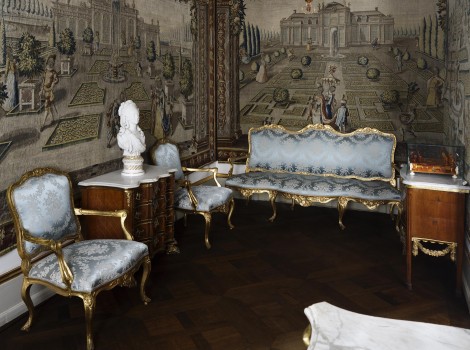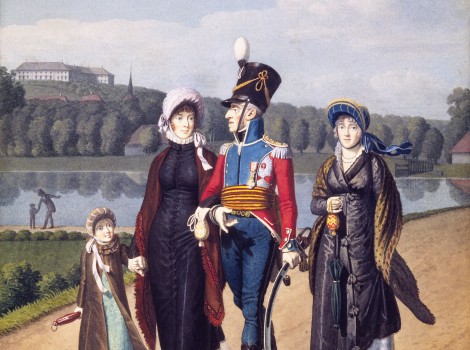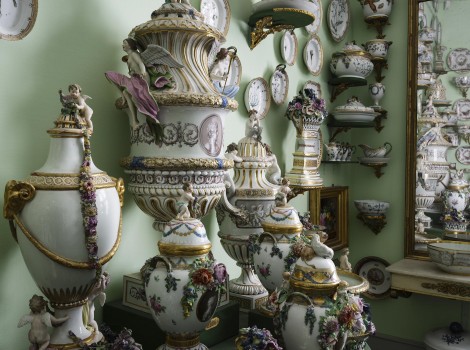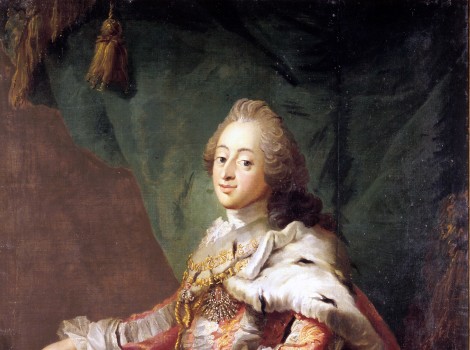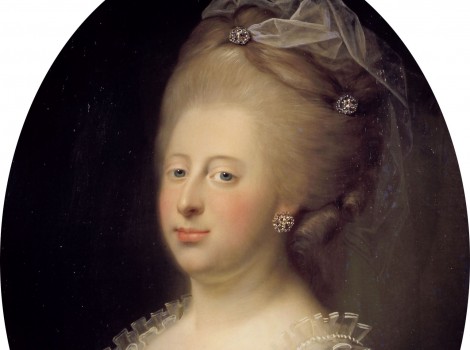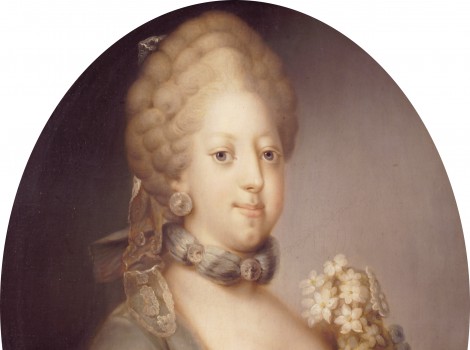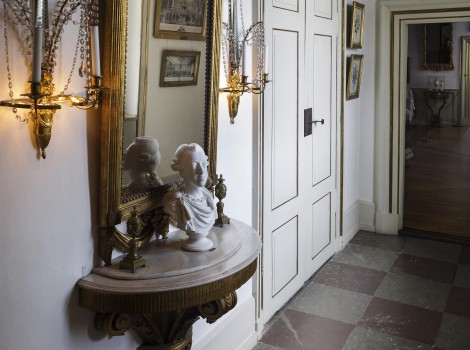Christian VII’s robe
Christian 7th couldn’t himself decide what to wear on his coronation in 1767. Since his great-great-great-great grandfather Christian 4th’s coronation, it had become a tradition that new kings wore a special, fine and expensive coronation suit. It was made of white silk woven with gold, and cut to imitate the style of a Spanish nobleman from the late 1500’s. At the coronation ceremony the King put on the red velvet mantle embroidered with gold, and lined with ermine, one of the most exclusive royal symbols in all of Europe. The garments and mantle kept their old-fashioned style, like the ceremony itself, for almost 300 years, right up to the last Danish coronation in 1840.
Coronations are the most glorious ceremonies in the hierarchy of power. The clothes that the King wore, in the time before television cameras, helped to make him visible at a distance. The coronation robes are the manifestation of his ascending the throne, with God’s benediction, and it had to be highly visible, with sweeping lengths of silk velvet, glittering jewels, gold brocaded fabrics, cascades of lace, and fluttering plumes. The garments were heavy, expensive, uncomfortable and delicate, which forced the King to move slowly and solemnly.
A king’s daily garments in 1767 mainly resembled the new, fashionable uniforms, so his coronation garments – which he only wore that one day – looked very exotic. His short, skirt-like breeches and the fitted doublet were just as peculiar in 1767 as knee breeches and lace cravats would be for us today.

 Dansk
Dansk
 English
English
 Deutsch
Deutsch

